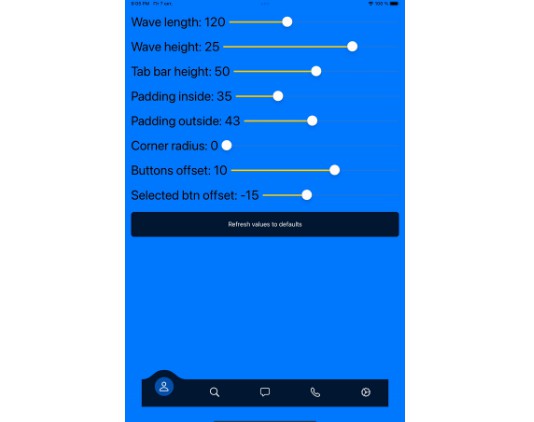Hangeul IME
A Hangeul input method based on the Revised Romanization of Korean.
Revised Romanization of Korean
The spellings used by this input method is a superset of the spellings standardized in the Revised Romanization (RR). If you already know RR, you can type out most Hangeul expressions using this IME straightaway. However, some of our spellings are not the same as the common RR spellings. The most notable difference is that no sound change rules are observed in our spellings. According to paragraph (8) of the official documentation on the Revised Romanization published by the Ministry of Culture & Tourism in July 2000:
When it is necessary to convert Romanized Korean back to Hangeul in special cases such as in academic articles, Romanization is done according to Hangeul spelling and not pronunciation. Each Hangeul letter is Romanized as explained in section 2 except that ㄱ, ㄷ, ㅂ, ㄹ are always written as g, d, b, l. When ㅇ has no sound value, it is replaced by a hyphen may also be used when it is necessary to distinguish between syllables.
A Hangeul input method is a special case where conversion to Hangeul is necessary so our spelling largely follows the rules outlined in paragraph (8) of the documentation. The exceptions to the rules are:
-
A hyphen ‘-‘ is not used to mark syllable boundaries. Capitalize the first letter of the second syllable instead.
The hyphen key is a pain to press because it’s located far away from the home row and requires your little finger to press. Instead, you can capitalize the first letter of the second syllable if ambiguities arise during syllable segmentation.
Example: “hanga” can be ambiguously interpreted as “han-ga” (한가) or “hang-a” (항아). By default if you type everything in lowercase, we interpret “hanga” as 한가. If you actually want to type 항아, you should capitalize the second “a”: “hangA”.
-
“i” and “y” are interchangeable everywhere.
In RR, both “i” and “y” are used to represent the sound /i/ in various vowels. Unlike “i”, “y” cannot be used alone and has to be followed by other vowel letters like “a”, “e”, “o”, and “u”. When typing a vowel like ㅒ (yae), however, “y” can be alone during the intermediate typing states. To make sure that all intermediate typing states of valid RR syllables are also valid, we decided to allow “i” and “y” to be used interchangeably.
Example: 민 can be typed out using “min” or “myn”.
-
“u” and “w” are interchangeable everywhere except in the cases of “wi” (ㅟ) and “ui” (ㅢ).
The reason is similar to why we made “i”/”y” interchangeable. In RR, “wi” (ㅟ) and “ui” (ㅢ) are the only places in the spelling where “u” and “w” contrasts so we can’t interchange “u” and “w” there.
Examples:
- 환자 can be typed out using “hwanja” or “huanja”.
- 의사 can only be typed out using “uisa” or “uysa”, but not “wisa” or “wysa”.
- 위구 can only be typed out using “wigu” or “wygu”, but not “uigu” or “uygu”.
Schema
The schema is split into multiple charts by the types of vowels and consonants in Korean.
- The first row of each chart are the Hangeul jamos.
- The second row of each chart are the standard Revised Romanization spellings of the jamos on the first row.
- The third row of each chart are the alternative spellings for typing.
Simple Vowels
| ㅏ | ㅓ | ㅗ | ㅜ | ㅡ | ㅣ | ㅐ | ㅔ | ㅚ | ㅟ |
|---|---|---|---|---|---|---|---|---|---|
| a | eo | o | u | eu | i | ae | e | oe | wi |
| w | ew | y |
Diphthongs
| ㅑ | ㅕ | ㅛ | ㅠ | ㅒ | ㅖ | ㅘ | ㅙ | ㅝ | ㅞ | ㅢ |
|---|---|---|---|---|---|---|---|---|---|---|
| ya | yeo | yo | yu | yae | ye | wa | wae | wo | we | ui |
| ia | ieo | io | iu | iae | ie | ua | uae | uo | ue |
Plosives
| ㄱ | ㄲ | ㅋ | ㄷ | ㄸ | ㅌ | ㅂ | ㅃ | ㅍ |
|---|---|---|---|---|---|---|---|---|
| g | kk | k | d | tt | t | b | pp | p |
Affricates
| ㅈ | ㅉ | ㅊ |
|---|---|---|
| j | jj | ch |
| c |
Fricatives
| ㅅ | ㅆ | ㅎ |
|---|---|---|
| s | ss | h |
Nasals
| ㄴ | ㅁ | ㅇ |
|---|---|---|
| n | m | ng |
Liquids
| ㄹ |
|---|
| l,r |
License
MIT
Credits
- This project was bootstrapped using the sample code for macOS IMKit from https://github.com/ensan-hcl/macOS_IMKitSample_2021
- The open source Gureum IME provided a good reference model: https://github.com/gureum/gureum/
- The schema is derived from the official documentation on the Revised Romanization from https://web.archive.org/web/20070916025652/http://www.korea.net/korea/kor_loca.asp?code=A020303

